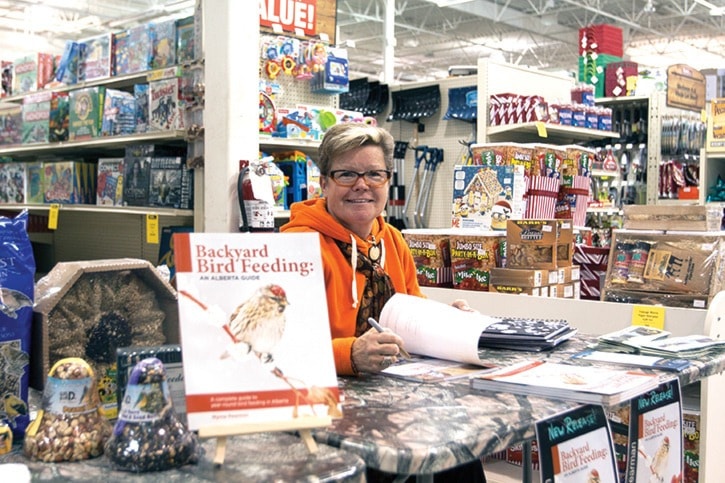The disconnect between people, especially children, concerns biologist Myrna Pearman, who has been the biologist in residence at Ellis Bird Farm for three decades.
"We spend our time in front of a tv or computer, playing on tablets and smart phones, and we don't see or appreciate the nature around us," Pearman said.
She said that without that appreciation, it's difficult for people to care about preserving nature and keeping it from being overrun by urban sprawl and industry.
The farm, which is southeast of Lacombe, features programs year-round, though especially in summer, designed to educate people about birds of all kinds, how to care for them, and how to watch for them. It teaches people about the benefits brought to nature and people about birds, and about the predators they face.
The love of nature was born early in Pearman, who said a family friend took her and her siblings under his wing when she was a young child, imparting his love of nature through trips in the woods and lessons that were disguised as fun games.
Ellis, who was in Stettler at Peavey Mart on Sunday, Dec. 6 to sign her new book, grew up with that love of nature remaining a fixture of her person, and ended up going to school and graduating with a degree in biogeology.
Her new book, a glossy and beautiful "Backyard Bird Feeding: An Alberta Guide," was an update and expansion of a book Pearman wrote nearly two-and-a-half decades ago.
"I wrote my first edition of the book in 1989," Pearman said. "It was black and white and only had winter birds. It's now out of print."
When contemplating whether to republish the book, Pearman eventually decided against it.
"It was old and out-of-date," she said. And so, she decided to update the old content as well as include birds from all year round, rather than just winter. With today's technology making it much easier to source photos of Alberta's winged residents, she also wanted it to be in colour.
"We put out a call on Facebook," she said. "We asked birdwatchers and backyard bird feeders to take photos and share them with us."
When the story was picked up in a local paper, it really took off and Pearman received hundreds of submissions. The final book makes use of photos submitted by more than 60 different photographers and hobbyists who submitted their work for the project.
"We're really grateful for that," Pearman said. "It means we have a book full of beautiful photographs."
The book talks about a wide variety of "bird things," from backyard bird feed types, feeder types, way to discourage opportunists like squirrels, deer and bears, predators, and, of course, birds.
Pearman spoke about the Project Feederwatch, which has bird enthusiasts throughout the winter maintaining and observing bird feeders and making records of what birds come and when. The information is gathered and is an excellent way for youth and adult alike to get involved in what she calls "Community Science."
For $35, participants are sent a research kit with instructions in how to proceed. In addition to those intructions, it also comes with a poster showing common bird types for aid in identification, and a calendar to mark observations upon. Project Feederwatch is operated by the Cornell Lab of Ornithology and Bird Studies Canada.
The data collected through Project Feederwatch helps the lab keep track of migration habits and changes, population increases or decreases, and helps determine if a species is sick or at risk.
Feederwatch data was instrumental in the creation of a systemic monitoring program of the Painted Bunting in Florida. The volunteers who collected data in the winter showed a steady decrease in the sighting of the bird, and in comination with the Breeding Bird Survey, which revealed a decrease in breeding populations, it was determined that there was, indeed, a problem.
"Programs like Feederwatch are important," Pearman said. "Not only do they help us keep track of bird species and potential problems, it gets people involved again with nature."
One of the things she hopes her book, which is easy to read, full of diagrams and photographs, will do is help people reconnect with nature.
The printing of the book was funded in part by Peavey Mart, which has had Pearman doing tours throughout Alberta in November and December, and whose donation has allowed the profits of the book to be donated back to Ellis Bird Farm.
Pearman has two more book signings left for anyone who wants a signed copy of the book, one at the Vermillion Peavey Mart on Dec. 12, and one at a Peavey Mart in Red Deer on Dec. 20.
For more information, visit www.EllisBirdFarm.ca.
